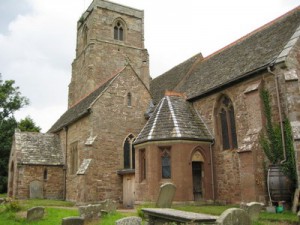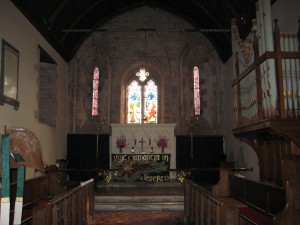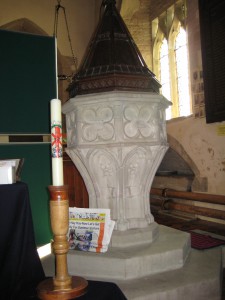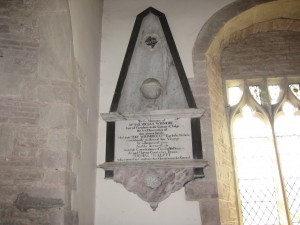This church dates from the 12th century, and is made entirely of local Herefordshire stone
In 1862 it was reopened with great ceremony after extensive renovation.
The old church had been whitewashed and coloured many times over, until eventually restoration was the only answer.
The vicar, the Rev. T.B. Power who was a former headmaster of the Collegiate School in Hereford, was determined to restore the dilapidated old church to its original glory, and the contract was given to Messrs. Pearson & Son of Ross, who built the Ross Corn Exchange. In total the expenditure was in excess of £1,300, most of which was supplied by the Rev. Power.
There were many rumblings however, over the fact that the parish was opposed to replacing the pews with open seats, as the pew owners “preferred their own ease and comfort in the house of God, to the convenience and accommodation of their poorer brethren.”
Font
The bowl of this font was cut from a solid block of Forest of Dean stone in around 1380. It was restored in the 1870s when the oak cover made by Rattee of Cambridge was added.
Memorials
Sarabella Wigmore
Sarabella Wigmore, late of Cainham in the county of Salop, the last descendant of that ancient family. Also her uncle, Thomas Wigmore, East India Merchant
Thomas Smyth
In the churchyard is a grave stone which dates from around the 15th century, and although there is no inscription it is thought to be the grave of a vicar, Thomas Smyth (1415-1432) who was murdered inside the church.



